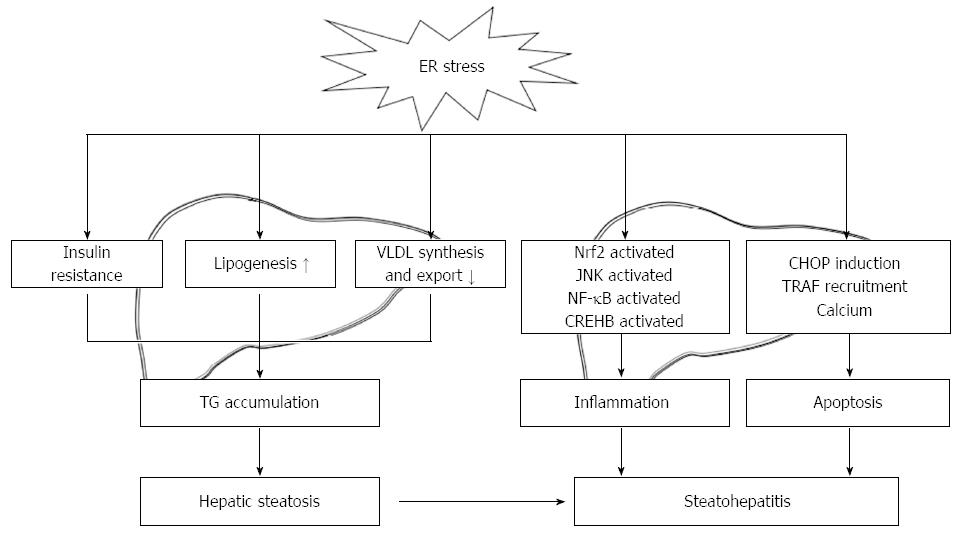Copyright
©2014 Baishideng Publishing Group Co.
World J Gastroenterol. Feb 21, 2014; 20(7): 1768-1776
Published online Feb 21, 2014. doi: 10.3748/wjg.v20.i7.1768
Published online Feb 21, 2014. doi: 10.3748/wjg.v20.i7.1768
Figure 2 Roles of endoplasmic reticulum stress in the development of steatosis and progression to nonalcoholic steatohepatitis.
ER stress interferes with hepatic lipid metabolism by activating lipogenesis and limiting VLDL formation and secretion. ER stress also acts indirectly on liver triglyceride accumulation by promoting insulin resistance in both the liver and adipose tissue. Furthermore, ER stress promotes the activation of Nrf2, JNK, NF-κB, CREBH, and CHOP, which actively participate in the inflammatory process and cell death. ER: Endoplasmic reticulum; VLDL: Very-low-density lipoprotein; Nrf2: Nuclear factor-erythroid-derived 2-related factor 2; JNK: c-Jun N-terminal kinase; NF-κB: Nuclear factor-κB; CREBH: Cyclic-AMP responsive element-binding protein H; CHOP: C/EBP-homologous protein; TRAF: Tumor-necrosis factor α-receptor-associated factor; TG: Triglyceride.
- Citation: Zhang XQ, Xu CF, Yu CH, Chen WX, Li YM. Role of endoplasmic reticulum stress in the pathogenesis of nonalcoholic fatty liver disease. World J Gastroenterol 2014; 20(7): 1768-1776
- URL: https://www.wjgnet.com/1007-9327/full/v20/i7/1768.htm
- DOI: https://dx.doi.org/10.3748/wjg.v20.i7.1768









